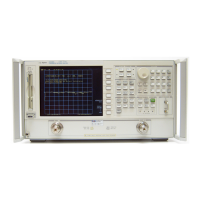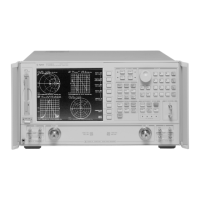Option 100 Fault Location and SRL 1-17
Introduction and Measurement Theory
Cable Impedance and Structural Return Loss Measurement Theory
Intuitively this is the right model to choose because the effect of a typical
poor connector on structural return loss measurement is an upward
sloping response, typically worst at the high frequencies.
Using a shunt C to model the connector, a value of the susceptance, −C,
may be chosen by the network analyzer to cancel the equivalent C of the
connector and mathematically minimize the effect of the connector on
the response measurement.
The equations for computing structural return loss and the average cable
impedance with capacitive compensation are described next.
Equation 11
Equation 12
Equation 13
In Equation 11, Z
in
(ω) is calculated from the measured return loss as
described in Equation 4, previously. The primed values are the new
calculation values using the capacitive compensation. With these
equations, the network analyzer can compute values for the cable
impedance and mathematically compensate for the connector mismatch
with a given value of C connector compensation.
Connector Length
The shunt C connector model can be improved with the addition of
connector length. Connector length is used to compensate for the phase
shift caused by the electrical length within the connector. The calibration
plane can be moved from one side of the cable connector to the other side,
so that the shunt C is placed exactly at the discontinuity of the connector
and the cable under test.
Z′
in
ω()
Z
in
ω()
1
jwC
-----------
⋅
Z
in
ω()
1
jwC
-----------+
----------------------------------=
Z′
cable
Z′
in
ω()
∑
N
----------------------------=
ρ′
SRL
ω()
Z′
in
ω() Z′
cable
–
Z′
in
ω() Z′
cable
+
-----------------------------------------=
